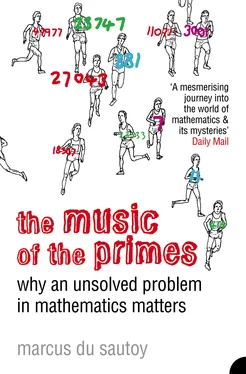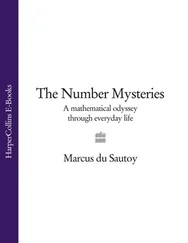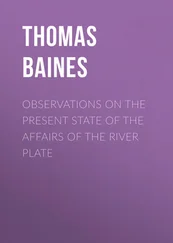The announcement came in a letter from Professor Enrico Bombieri. One could not have asked for a better, more respected source. Bombieri is one of the guardians of the Riemann Hypothesis and is based at the prestigious Institute for Advanced Study in Princeton, once home to Einstein and Gödel. He is very softly spoken, but mathematicians always listen carefully to anything he has to say.
Bombieri grew up in Italy, where his prosperous family’s vineyards gave him a taste for the good things in life. He is fondly referred to by colleagues as ‘the Mathematical Aristocrat’. In his youth he always cut a dashing figure at conferences in Europe, often arriving in a fancy sports car. Indeed, he was quite happy to fuel a rumour that he’d once come sixth in a twenty-four-hour rally in Italy. His successes on the mathematical circuit were more concrete and led to an invitation in the 1970s to go to Princeton, where he has remained ever since. He has replaced his enthusiasm for rallying with a passion for painting, especially portraits.
But it is the creative art of mathematics, and in particular the challenge of the Riemann Hypothesis, that gives Bombieri the greatest buzz. The Riemann Hypothesis had been an obsession for Bombieri ever since he first read about it at the precocious age of fifteen. He had always been fascinated by properties of numbers as he browsed through the mathematics books his father, an economist, had collected in his extensive library. The Riemann Hypothesis, he discovered, was regarded as the deepest and most fundamental problem in number theory. His passion for the problem was further fuelled when his father offered to buy him a Ferrari if he ever solved it – a desperate attempt on his father’s part to stop Enrico driving his own model.
According to his email, Bombieri had been beaten to his prize. ‘There are fantastic developments to Alain Connes’s lecture at IAS last Wednesday,’ Bombieri began. Several years previously, the mathematical world had been set alight by the news that Alain Connes had turned his attention to trying to crack the Riemann Hypothesis. Connes is one of the revolutionaries of the subject, a benign Robespierre of mathematics to Bombieri’s Louis XVI. He is an extraordinarily charismatic figure whose fiery style is far from the image of the staid, awkward mathematician. He has the drive of a fanatic convinced of his world-view, and his lectures are mesmerising. Amongst his followers he has almost cult status. They will happily join him on the mathematical barricades to defend their hero against any counter-offensive mounted from the ancien régime ’s entrenched positions.
Connes is based at France’s answer to the Institute in Princeton, the Institut des Hautes Études Scientifiques in Paris. Since his arrival there in 1979, he has created a completely new language for understanding geometry. He is not afraid to take the subject to the extremes of abstraction. Even the majority of the mathematical ranks who are usually at home with their subject’s highly conceptual approach to the world have balked at the abstract revolution Connes is proposing. Yet, as he has demonstrated to those who doubt the necessity for such stark theory, his new language for geometry holds many clues to the real world of quantum physics. If it has instilled terror in the hearts of the mathematical masses, then so be it.
Connes’s audacious belief that his new geometry could unmask not only the world of quantum physics but explain the Riemann Hypothesis – the greatest mystery about numbers – was met with surprise and even shock. It reflected his disregard for conventional boundaries that he dare venture into the heart of number theory and confront head-on the most difficult outstanding problem in mathematics. Since his arrival on the scene in the mid-nineties, there had been an expectancy in the air that if anyone had the resources to conquer this notoriously difficult problem, it was Alain Connes.
But it was not Connes who appeared to have found the last piece in the complex jigsaw. Bombieri went on to explain that a young physicist in the audience had seen ‘in a flash’ how to use his bizarre world of ‘super-symmetric fermionic—bosonic systems’ to attack the Riemann Hypothesis. Not many mathematicians knew quite what this cocktail of buzzwords meant, but Bombieri explained that it described ‘the physics corresponding to a near-absolute zero ensemble of a mixture of anyons and morons with opposite spins’. It still sounded rather obscure, but then this was after all the solution to the most difficult problem in the history of mathematics, so no one was expecting an easy solution. According to Bombieri, after six days of uninterrupted work and with the help of a new computer language called MISPAR, the young physicist had finally cracked mathematics’ toughest problem.
Bombieri concluded his email with the words, ‘Wow! Please give this the highest diffusion.’ Although it was extraordinary that a young physicist had ended up proving the Riemann Hypothesis, it came as no great surprise. Much of mathematics had found itself entangled with physics over the past few decades. Despite being a problem with its heart in the theory of numbers, the Riemann Hypothesis had for some years been showing unexpected resonances with problems in particle physics.
Mathematicians were changing their travel plans to fly in to Princeton to share the moment. Memories were still fresh with the excitement of a few years earlier when an English mathematician, Andrew Wiles, had announced a proof of Fermat’s Last Theorem in a lecture delivered in Cambridge in June 1993. Wiles had proved that Fermat had been right in his claim that the equation x n + y n = z n has no solutions when n is bigger than 2. As Wiles laid down his chalk at the end of the lecture, the champagne bottles started popping and the cameras began flashing.
Mathematicians knew, however, that proving the Riemann Hypothesis would be of far greater significance for the future of mathematics than knowing that Fermat’s equation has no solutions. As Bombieri had discovered at the tender age of fifteen, the Riemann Hypothesis seeks to understand the most fundamental objects in mathematics – prime numbers.
Prime numbers are the very atoms of arithmetic. The primes are those indivisible numbers that cannot be written as two smaller numbers multiplied together. The numbers 13 and 17 are prime, whilst 15 is not since it can be written as 3 times 5. The primes are the jewels studded throughout the vast expanse of the infinite universe of numbers that mathematicians have explored down the centuries. For mathematicians they instil a sense of wonder: 2, 3, 5, 7, 11, 13, 17, 19, 23, … – timeless numbers that exist in some world independent of our physical reality. They are Nature’s gift to the mathematician.
Their importance to mathematics comes from their power to build all other numbers. Every number that is not a prime can be constructed by multiplying together these prime building blocks. Every molecule in the physical world can be built out of atoms in the periodic table of chemical elements. A list of the primes is the mathematician’s own periodic table. The prime numbers 2, 3 and 5 are the hydrogen, helium and lithium in the mathematician’s laboratory. Mastering these building blocks offers the mathematician the hope of discovering new ways of charting a course through the vast complexities of the mathematical world.
Yet despite their apparent simplicity and fundamental character, prime numbers remain the most mysterious objects studied by mathematicians. In a subject dedicated to finding patterns and order, the primes offer the ultimate challenge. Look through a list of prime numbers, and you’ll find that it’s impossible to predict when the next prime will appear. The list seems chaotic, random, and offers no clues as to how to determine the next number. The list of primes is the heartbeat of mathematics, but it is a pulse wired by a powerful caffeine cocktail:
Читать дальше












